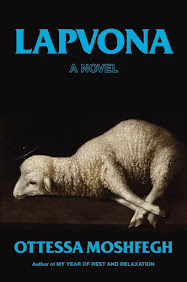EVERYTHING EVERYWHERE ALL AT ONCE (2022)
Directed by Daniel Kwan & Daniel Scheinert
A24 Films, 132 minutes, R (language, gross-out humor, drug use, violence)
★
Oscar Best Picture winners are often mysterious. How did the Academy prefer My Fair Lady over Becket or Dr. Strangelove in 1964, or Kramer vs. Kramer over Apocalypse Now in 1979? Sometimes the bar is dropped lower to honor such now embarrassing choices such as Rocky (1975), Terms of Endearment (1983), Forest Gump (1994), and Gladiator (2000), offerings that were little more than a decent way to while away a few hours.
This brings me to Everything Everywhere All at Once, which holds the dubious honor of being the worst choice ever made by the Academy. I hesitate even to call it a “movie;” it’s little more than a live-action video game as might have been developed by a novice gamer who lucked into a big budget.
Let’s get this out of the way. I like Michelle Yeoh a lot and it’s criminal she has had to play so many stereotypical roles. Still, I didn’t like her as a kung fu queen when she was 37 (Crouching Tiger, Hidden Dragon) and I’m not buying it 23 years later. I also enjoy contemplating other dimensions and time periods in some movies–Donnie Darko, The Matrix, Source Code–and it would be hypocritical for me a Star Trek geek, to criticize science fiction. I even enjoy the Marvel universe in small doses, as in comic books and summer blockbusters.
Everything Everywhere doesn’t belong in the same category as any of the above. It has been variously labeled as "comedy drama," "sci-fi,” “fantasy,” “surrealism,” and “adventure.” Evelyn Wang (Yeoh) is an older and overwhelmed laundromat owner about to be served divorce papers by her husband Waymond (Ke Huy Quan). As if she needs more grief. She’s taking care of her demanding elderly father Gong Gong (James Hong), has an acrimonious relationship with her daughter Joy (Stephanie Hue) about to come out as a lesbian, hates customers like Big Nose,* and her business finances are such a mess that IRS auditor Deirdre Beaubeirdre (Jamie Lee Curtis) threatens government seizure of her assets.
This alone is material for a good movie, but directors Kwan and Scheinert, who inexplicably won Best Director Oscars–mucked up matters with an absurd–as opposed to absurdist–foray into the multiverse. Yeah, yeah, I know this is oh-so-trendy these days. That also makes it overdone enough to invite comparisons. Evelyn is somehow the key to making sure that Jobu Tupaki (Hsu) doesn’t unleash a singularity that might (it’s unclear) destroy all things, including various other dimensions in which the major characters appear in radically different roles. She, akin to Joseph Campbell’s hero’s journey observations, is reluctant to take on the task. At the speed of a mouse click, she is shown alternative fates–opera singer, Deirdre’s hotdog-fingered lover, corpse, and Kung Fu mistress–at the speed of a mouse click. Some tempt her–shades of Matt Haig’s novel The Midnight Library–but her reluctance rises when she finds out that Joy is Jobu.
And now it’s time to ratchet the silliness quotient. How about another dimension where fingers are shaped like long, limp hotdogs? What if they turn into penises? How about bad guys who get energy to fight by lowering their pants to land upon phallic statues? Characters wear ear buds that activate dimensional shifts after the wearer swallows disgusting things and pushes a green button. (Repeat to supercharge powers as they wane.) Did I mention the Ratatouille spinoff involving a chef who hides his support/advisor raccoon under his toque blanche? Or that Yeoh and Curtis are rocks in one dimension? At some point the entire tenor of the movie changes and green buttons become “Google eyes” as the plot plods toward a Hallmark ending. And, yes, the singularity is actually a giant black bagel with everything? (Get it?)
Has American discourse degenerated to such depths that critics can actually say this movie probes issues of nihilism versus existentialism? Let’s be frank. This should be a summer movie that you attend with a few friends. Afterward the debate is between, “What was that mess?” versus “I dunno, I kind of liked it.” All I can think is that it must have looked a whole lot better on a smartphone screen. If this is what we can expect from the “new” Academy–lots of Millennials I gather–you can safely skip the Oscars from now on.
Rob Weir
* If you saw the film in a theater, “Big Nose” (Jenny Slate) was changed to “Debbie the Dog Mom,” after complaints that Slate’s character stereotyped Jews. It does, but the Academy overlooked that as well.





